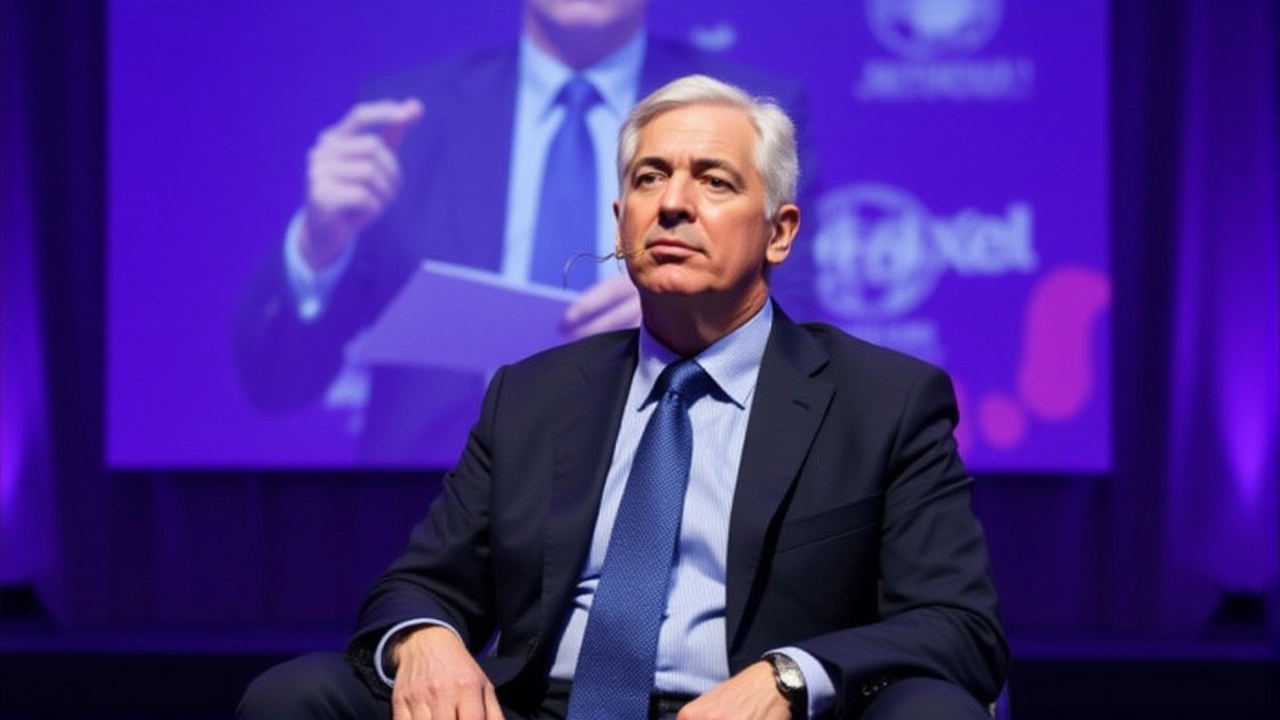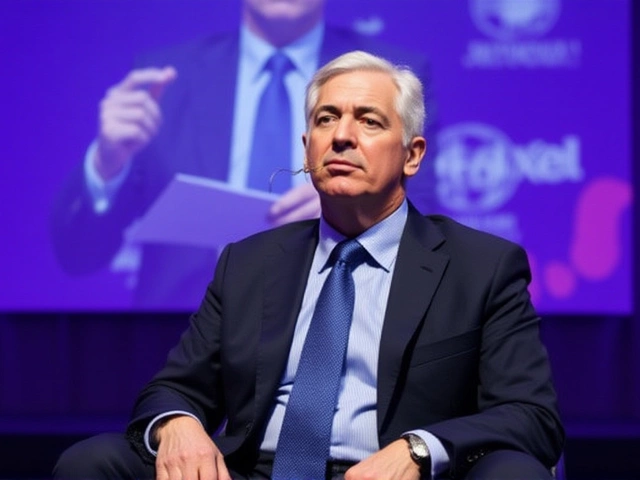When Bill Ackman, founder and CEO of Pershing Square Holdings Ltd. took the stage at the 2025 Forbes Iconoclast SummitNew York City, he called the two government‑sponsored mortgage giants a "$300 billion asset" ripe for privatization. Ackman’s pitch wasn’t just rhetoric – his hedge fund has piled billions into the shares of the Federal National Mortgage Association (Fannie Mae) and the Federal Home Loan Mortgage Corporation (Freddie Mac), arguing that the U.S. Treasury’s lingering stakes are a drag on both investors and home‑buyers.
Historical backdrop: From bailout to conservatorship
Back in September 2008, the financial crisis sent the U.S. housing market into free‑fall. In a frantic effort to stop a total collapse, the Federal Housing Finance Agency (FHFA) placed Fannie Mae and Freddie Mac into a government‑run conservatorship. The move was billed as temporary, meant to stabilize mortgage financing while the Treasury injected capital.
Fast forward 16 years, and the two enterprises still sit under FHFA oversight. They now guarantee roughly $7 trillion in mortgages, collecting about 65 basis points in annual fees. The Treasury holds senior preferred shares valued at roughly $340 billion, giving the government a liquidation preference that dwarfs the companies’ market capitalizations.
Ackman’s campaign: Numbers, rhetoric, and a merger idea
Ackman painted the scenario as a win‑win. He noted that Fannie Mae’s stock surged almost 1,000 % over the past 12 months and climbed 300 % in 2025 alone, turning it into Pershing Square’s top‑performing holding of the year. Freddie Mac, while smaller, ranked third in the fund’s profit column. Combined, the two positions could be worth up to $10 billion – roughly half of Pershing Square’s total assets under management.
Beyond chasing returns, Ackman floated a concrete policy proposal: merge the two GSEs into a single, privately‑run entity. He argued that a combined firm would cut oversight costs, streamline mortgage‑rate setting, and give the Treasury a cleaner exit path.
“A merger would also reduce the cost and risks of government oversight as there would be only one institution that would require FHFA oversight,” he said during the summit.
Market reaction: Explosive gains and growing exposure
Investors have clearly responded. As of August 2025, Pershing Square was up 18.4 % year‑to‑date, outpacing the broader market’s 10.5 % gain. Analysts attribute almost half of that outperformance to the GSE holdings. The rally has attracted both retail enthusiasm and institutional curiosity, with several large funds quietly adding to their positions.
Nevertheless, the climb hasn’t been without bumps. In Q1 2025, Fannie Mae reported a $33 million shortfall against its capital requirements, while Freddie Mac fell $162 million short. Both still sit above the FHFA’s 2.5 % capital‑ratio floor, but the gaps signal that any rapid pull‑back into the private market would need a careful recapitalization plan.
Political undercurrents: Trump administration’s partial‑sale plan
Earlier this year, the Trump administration hinted at a partial public offering of the two GSEs, citing the need to reduce the federal balance sheet. In December 2024, Ackman tweeted, "Trump likes big deals and this would be the biggest deal in history. I am confident he will get it done." While the administration has not set a concrete timeline, the rhetoric aligns with the president’s broader agenda of shrinking government holdings in private markets.
Any move forward, however, would require congressional approval to convert Treasury’s preferred shares into common equity or to forgive a portion of the debt. Lawmakers remain split: some see the privatization as a path to market discipline; others fear a repeat of the 2008 fallout.
Critics voice caution: Risks to housing stability
Mortgage attorney Marty Green warned that the proposed IPO schedule is "extraordinarily aggressive," noting that a hasty transition could shock the mortgage market and push rates higher in the short term.
Conservative outlet National Review published an op‑ed arguing that keeping the implicit government guarantee while selling shares would create a "too‑big‑to‑fail" hybrid, exposing taxpayers to future bailouts. The piece advocated winding down the agencies entirely, not privatizing them.
Financial regulators echo similar concerns. The FHFA’s Enterprise Regulatory Capital Framework (ERCF) was designed precisely to prevent under‑capitalization. Any privatization plan must satisfy those standards, or the Treasury may have to inject additional capital – a paradox for a move billed as a cost‑saving measure.
Future outlook: What’s next for the GSEs?
Three scenarios dominate the conversation:
- Full privatization: A merger followed by a joint IPO, with the Treasury converting preferred shares and eventually exiting entirely.
- Partial market offering: The government sells a portion of its stake while retaining control, creating a hybrid public‑private structure.
- Wind‑down: Congress mandates a gradual phase‑out, ending the GSEs’ guarantee role and shifting mortgage financing to private insurers.
Each path carries trade‑offs. Full privatization could unlock up to $300 billion in value for investors, but it demands robust safeguards to keep mortgage rates affordable. A partial offering may appease both markets and policymakers but leaves the Treasury’s exposure largely intact. A wind‑down would eliminate government risk but could destabilize the secondary mortgage market in the short run.
For Ackman, the gamble is clear: keep pushing, leverage Pershing Square’s sizable stake, and hope the political wind shifts in his favor. For the rest of us, the story underscores how a handful of billion‑dollar assets can shape the entire housing finance system.
Key takeaways
- Bill Ackman brands Fannie Mae and Freddie Mac a $300 billion government asset ripe for privatization.
- Pershing Square’s holdings in the GSEs have generated near‑triple‑digit returns, contributing half of the fund’s YTD gain.
- The Trump administration is exploring a partial public sale, but congressional approval and capital‑adequacy hurdles remain.
- Critics warn that an aggressive rollout could destabilize mortgage rates and revive 2008‑style risks.
- Three possible outcomes – full privatization, partial sale, or wind‑down – each carry distinct market and policy implications.
Frequently Asked Questions
How would a merger of Fannie Mae and Freddie Mac affect mortgage rates?
Proponents say a single, privately‑run GSE would cut duplicate overhead and streamline underwriting standards, potentially shaving 0.05‑0.10 percentage points off average rates. However, analysts caution that market perception of increased concentration could offset those gains, especially if investors demand a higher risk premium.
What role does the Treasury’s $340 billion preferred shareholding play?
The preferred shares give the Treasury a liquidation preference that outranks common equity, meaning any IPO proceeds must first satisfy the government’s claim. Converting or forgiving those shares is a prerequisite for true privatization and would likely require congressional legislation.
Why are critics worried about moving too quickly?
Mortgage attorney Marty Green notes that an "extraordinarily aggressive" timeline could leave the market short of liquidity, prompting lenders to tighten credit. In the short term, that could push monthly payments up, undermining the very affordability argument used to justify the deal.
What does the FHFA’s capital shortfall mean for privatization?
Both GSEs reported deficits – $33 million for Fannie Mae and $162 million for Freddie Mac – against the ERCF requirements. Any privatization plan must boost their capital ratios above the 2.5 % floor, likely through a fresh capital infusion or a restructuring of equity, adding complexity and cost to the process.
How influential is Pershing Square’s stake in shaping policy?
With an estimated $10 billion exposure, Pershing Square is a major shareholder and a vocal advocate. While a single hedge fund can’t dictate legislation, its public campaign and sizable voting power can sway other investors and add pressure on policymakers to consider a market‑based solution.
- Poplular Tags
- Bill Ackman
- Fannie Mae
- Freddie Mac
- privatization
- mortgage market











